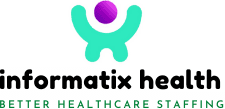In the fast-paced world of healthcare, a professional nursing portfolio is more than just a collection of documents; it’s a reflection of your skills, achievements, and career aspirations. Whether you’re applying for a new job, pursuing advanced education, or showcasing your expertise, a well-organized portfolio can set you apart. Here’s how to build one that truly represents your nursing journey.
What Is a Nursing Portfolio?
A nursing portfolio is a personalized collection of documents that highlights your professional achievements, qualifications, and competencies. It’s a valuable tool for career advancement, offering a comprehensive snapshot of your nursing experience.
Why Do You Need a Nursing Portfolio?
- Job Applications: Stand out during the hiring process by showcasing your unique skills and experiences.
- Performance Reviews: Provide a clear record of accomplishments and competencies.
- Professional Growth: Reflect on your career journey and identify areas for improvement or further education.
- Networking: Share your expertise and achievements with peers and mentors.
What to Include in Your Nursing Portfolio
- Personal Information
- Current resume or CV.
- Contact information.
- A professional headshot (optional).
- Education and Credentials
- Copies of diplomas and degrees.
- Nursing license(s).
- Certifications (e.g., BLS, ACLS, PALS).
- Professional Experience
- Employment history, including job descriptions and responsibilities.
- Performance evaluations or letters of recommendation.
- Skills and Competencies
- A list of clinical and non-clinical skills.
- Examples of critical thinking, leadership, or patient care expertise.
- Professional Achievements
- Awards, recognitions, or honors.
- Published articles, presentations, or research.
- Continuing Education
- Records of completed courses or workshops.
- Certificates of attendance.
- Evidence of participation in professional organizations.
- Sample Work
- Patient care plans (with identifying details removed).
- Quality improvement projects.
- Case studies or clinical narratives.
- References
- Contact information for professional references.
- Letters of recommendation or commendation.
Tips for Organizing Your Portfolio
- Use a Professional Format: Choose a clean, organized layout that’s easy to navigate.
- Go Digital: Consider creating a digital version of your portfolio for easy sharing.
- Keep It Updated: Regularly add new accomplishments, certifications, and experiences.
- Tailor for Specific Roles: Customize your portfolio for the job or opportunity you’re pursuing.
The Benefits of a Digital Nursing Portfolio
A digital portfolio offers convenience, accessibility, and flexibility. Use platforms like LinkedIn or create a personal website to showcase your achievements. Digital portfolios are particularly useful for networking and sharing your credentials with potential employers.
Building a professional nursing portfolio is an investment in your career. It’s a tangible way to demonstrate your dedication, skills, and growth as a nurse. Start compiling your portfolio today and take the next step toward achieving your professional goals.


